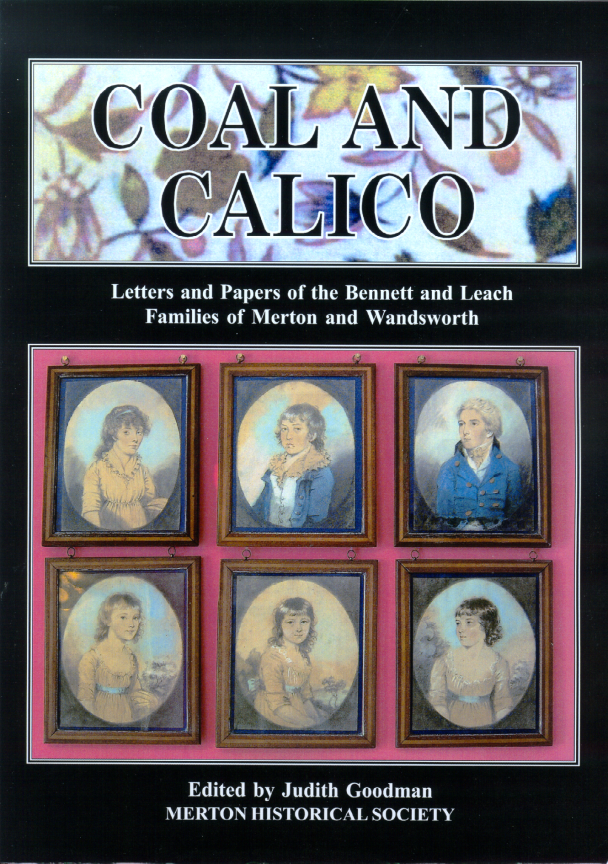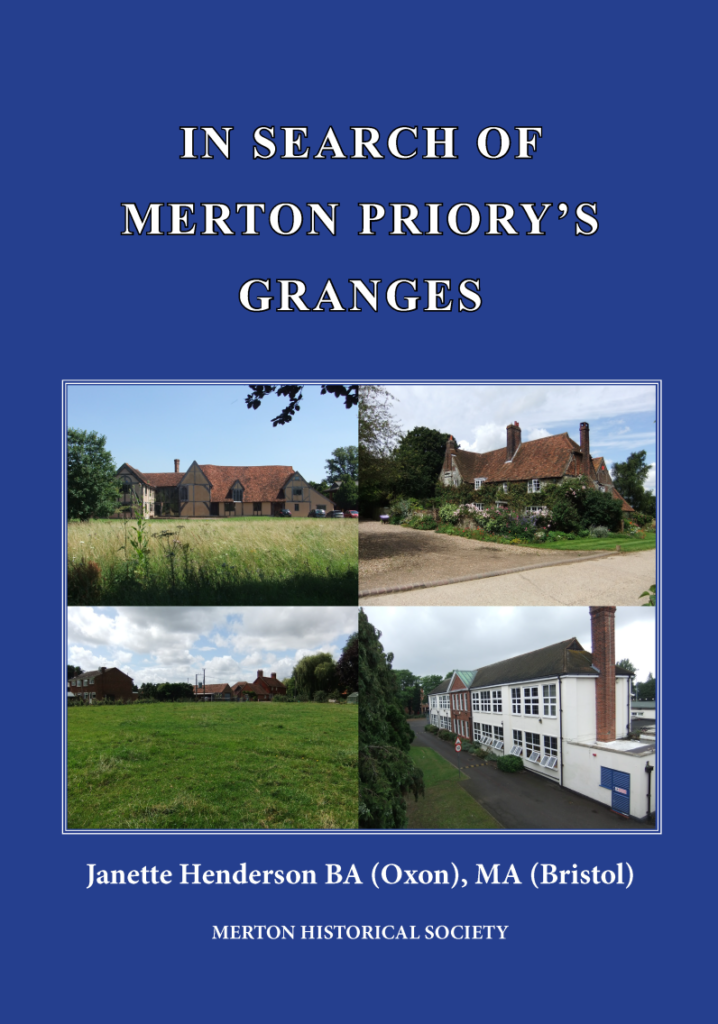Author Archive: Peter Hopkins
Coal and Calico: Letters and Papers of the Bennett and Leach Families of Merton and Wandsworth
This publication is concerned with two families who, for several decades in the 18th and 19th centuries, were important in the industrial north-east of the historic county of Surrey. They were the Bennetts, coal merchants of Wandsworth, and the Leaches, calico printers of Merton Abbey. These families, who were at first business contacts and then became friends, were joined permanently when Thomas Bennett married Sarah Jane Leach in 1797. Their grandson, Frederick Bennett, seems to have decided to leave a genealogical legacy to future generations. Firstly, from his own recollections and research he compiled a memoir of the Bennett family; secondly, he assembled the inherited letters and papers into a bound volume, and added his own commentary; and, finally, he put together, from both published and manuscript material, an account of Merton Abbey. Judith Goodman has edited these three projects into this volume.
Copper Milling on the Wandle
Whereas the establishment of copper mills at various locations throughout the Wandle Valley during the late 17th and early 18th centuries occasionally finds a brief mention in the respective parish histories, the phenomenon overall has so far attracted only passing comment and, rather surprisingly, appears not to have stimulated any detailed study by industrial historians.
Data Protection Policy
Merton Historical Society Data Protection and Privacy Statement (Provisional)
Daughter Houses of Merton Priory
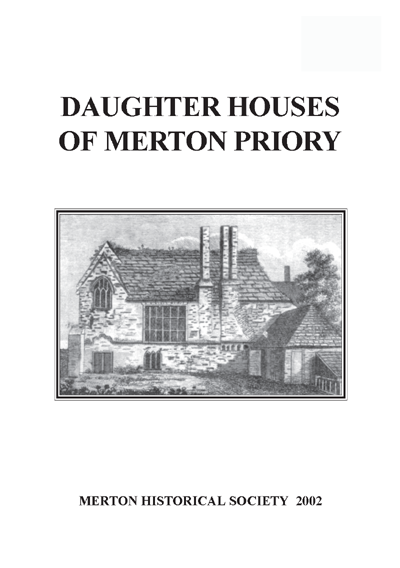
Profusely illustrated with plans, photographs, drawings and tables, the book traces the spread of Merton’s influence in England, Scotland and Normandy, through the setting up Augustinian communities at Taunton, Plympton, Canterbury, Bodmin, Edinburgh, Cirencester, St Lô, Dover and Christchurch within 33 years of the foundation of Merton Priory beside the Wandle.
Digital Classics
Many classic County histories are now accessible in digital format from Google Books or Internet Archive. Although research has moved on over the centuries since they were published, they are still valuable resources. But do remember that not everything in them is accurate. For example, some statements about Morden in fact refer to Steeple Morden in Cambridgeshire, not Morden, Surrey.
Documents relating to the Church and Clergy of Morden
The cartulary known as the Westminster Domesday (WD) contains copies of a collection of official documents relating to the abbey’s appropriation of the rectorial rights to tithes of the parish of Morden in 1301. Vicars were appointed to serve the spiritual needs of the parishioners, and agreements for the support of the vicars were recorded in 1331 and 1442/1443. 16th-century copies of these agreements survive at Surrey History Centre, as part of a fascinating collection of documents relating to a late 16th-century dispute over tithes between the vicar and the lord of the manor. Earlier documents relating to clergy also exist, and the Register Books also include some information on the appointment of clergy.
Excavation of a Romano-British site at Short Batsworth, Mitcham 1966-68
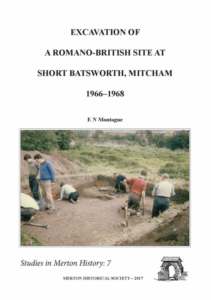
In this study Eric Montague, late Vice-President of MHS, records the history of the site, the dig, the finds and his conclusions. This 32-page A4 booklet has 18 illustrations (maps, plans and photographs) and sells at £2.50 (£2 to members) plus £1.20 postage.
Excavations
During the 1960s and 1970s the Society was involved in archaeological investigations on the following local sites threatened by development.
Family History
Several members of the Society are involved in researching their family history.
Garth Cottages, Garth Road
Click on the Audio clip to hear Madeline and Gladys talking about the cottages.
Garth Villa, Garth Road
Click on the Audio clip to hear Betty discussing Garth Villa and the piggeries.
Growing up in Mitcham (1939-1963)
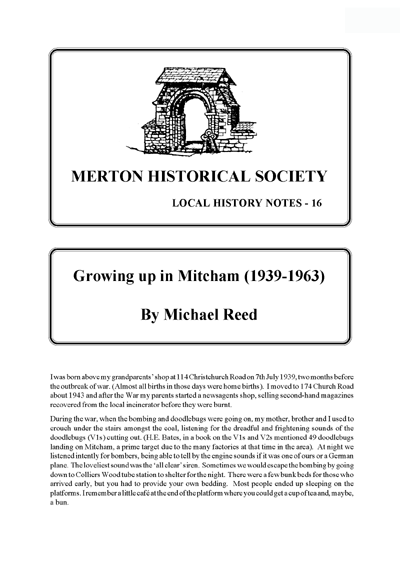
Memories of life in and around Mitcham’s Church Road where the Michael Reed’s parents ran a newspaper shop.
GROWING UP ON THE ST HELIER ESTATE 1930–1950: School, Wartime and First Jobs
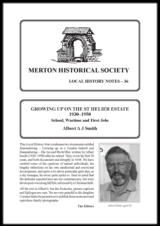 Albert Smith recalls his wartime childhood on the St Helier Estate Morden, his schooldays, and his first job at Hawes Bros, Morden.
Albert Smith recalls his wartime childhood on the St Helier Estate Morden, his schooldays, and his first job at Hawes Bros, Morden.
I Remember… Childhood Memories of Wartime Mitcham
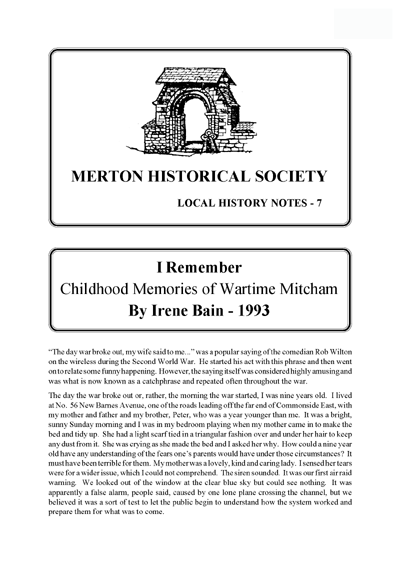
Those who remember the War years will have very vivid memories of all that happened:- of the sudden changes – the house and family across the road that were not there next morning – the ‘culture shock’ of evacuation, etc., etc. Irene Bain has remembered, vividly, life in Mitcham during the War, as it was for a family. For those who weren’t there, this is what it was like.
If you can’t make sterling payments
We have an arrangement with Di And Saul Books for customers who cannot make sterling payments
James Edwards’s Companion from London to Brighthelmston (1789-1801)
James Edwards, a surveyor, set out to measure the distances from London to various destinations along the roads leading to the new seaside resort of Brighton. After publishing a table of distances between two out of a list of 100 villages in East Surrey in 1797, he went on to produce in 1801 a series of maps together with descriptions of the properties to be found along each route.
JUSTICE TO MEN AND COUNTRY: The Mitcham Military Tribunal, 1916–1918
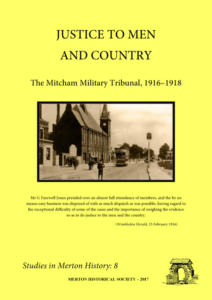 In this study Keith Penny provides information on the ever-changing regulations regarding conscription, and the way these were administered in Mitcham, as reported in the local newspapers of the time.
In this study Keith Penny provides information on the ever-changing regulations regarding conscription, and the way these were administered in Mitcham, as reported in the local newspapers of the time.
Liberty Print Works: Wartime Remembrances
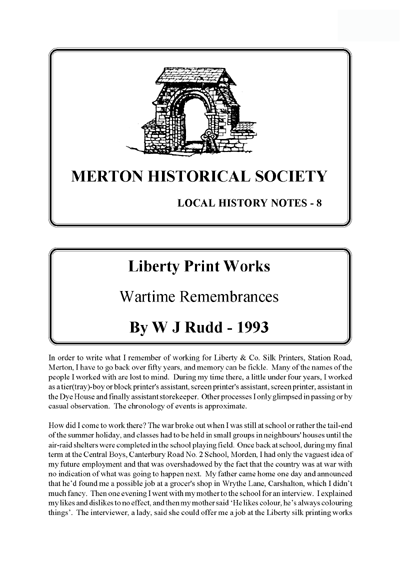
Bill Rudd has achieved a great deal in this paper. There are good clear descriptions of the processes that went on in each of the separate buildings, (together with occasional stories of his personal mishaps), set against a background of wartime life, air-raids, lack of sleep, bomb damage, finding some lunch, etc., ending with call-up in 1943.
This will be of interest to many future historians – the map and illustrations are nice too!
 MERTON HISTORICAL SOCIETY
MERTON HISTORICAL SOCIETY 